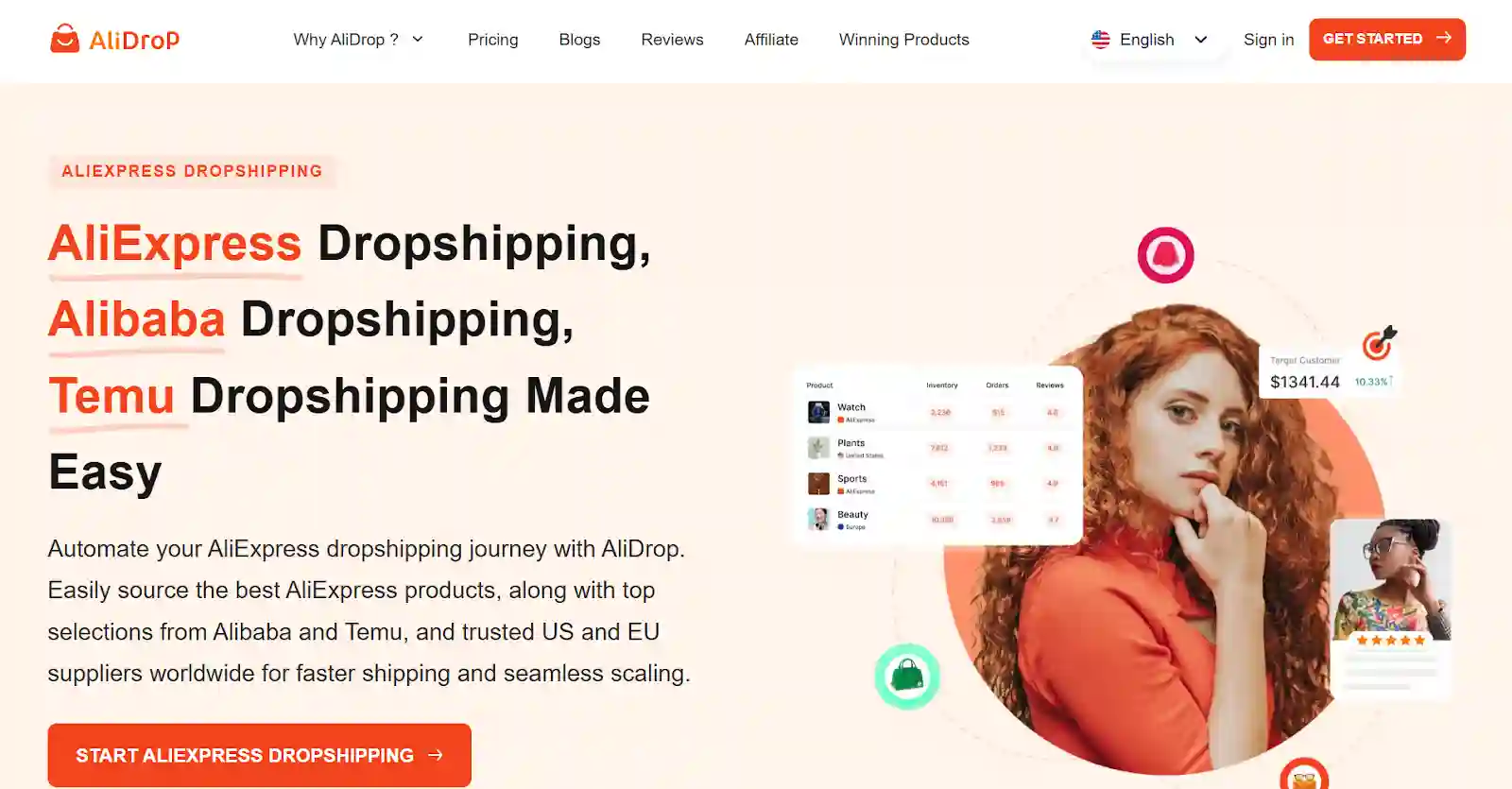Can you actually run multiple drop shipping stores without burning out? That's what we are here to answer you today. The good news is yes, the bad news is it's going to take a bit of work.

If you are thinking of branching out into niche markets, expanding your product offerings, or just trying out new business models, then running multiple drop shipping stores can be a great way. Here is how you can get started.
Is it Possible to Have Multiple Dropshipping Stores?
The short answer is yes, but there will be some legal formalities you need to take care of. You'd have to navigate the compliance nuances, and it can be like juggling a lot of things in the air.
More stores means more sales channels and bigger customer databases to deal with. The flip side is you get higher profits and yields, but you will have to spend a good amount of time, resources, and energy into running and managing these stores. You will be partnering with multiple drop shipping suppliers, promoting each of your stores individually, and also keeping up with the latest market trends.
Benefits of Running Multiple Dropshipping Stores
The biggest advantage is revenue spread - you're not putting all your eggs in one basket. Here are the benefits of running multiple dropshipping stores efficiently:
- Risk Distribution: When one store faces problems, others can maintain cash flow. Seasonal drops in one niche won't kill your entire business. You get protection against market changes that could hurt a single-store business.
- Niche Market Expansion: You can test different audiences without changing your main store's brand. Multiple stores let you tap into various customer groups and shopping preferences. Each store can target specific demographics more accurately.
- Product Testing Opportunities: Different stores become testing grounds for new products. You can validate winning products across multiple audiences quickly. Failed products won't damage your established store's reputation.
- Revenue Scaling Potential: More stores naturally create more income streams. Successful multi-store owners report earning 2-3x more than single-store operators. You can reinvest profits from profitable stores into growth.
- Cross-Promotion Benefits: You can recommend related products from other stores to existing customers. Email lists from different stores can cross-promote complementary products. Customer lifetime value increases when you serve multiple needs.
- Market Trend Capitalization: You can jump on trending niches quickly with new stores. Multiple stores let you catch seasonal opportunities across different markets. You won't miss profit opportunities while waiting to pivot your main store.
Challenges of Running Multiple Dropshipping Stores
Managing multiple stores isn't just about scaling up - it creates unique problems that single-store owners never face. Here are some challenges associated with running multiple dropshipping stores:
- Time Management: Each store needs daily attention for orders, customer service, and marketing. You'll spend more time switching between different systems and dashboards. Quality can suffer when your attention gets split across multiple businesses.
- Higher Operating Costs: Platform fees multiply with each additional store you launch. Marketing budgets need to cover multiple audiences and campaigns. You'll pay more for apps, tools, and services across all stores.
- Supplier Relationship Strain: Managing multiple suppliers becomes a full-time job. Quality control gets harder when dealing with different vendors. Communication gaps can cause fulfillment problems across all stores.
- Brand Identity Confusion: Maintaining separate brand voices requires constant attention. Customers might get confused if they find connections between your stores. Inconsistent messaging can damage credibility across your entire portfolio.
- Inventory Management Headaches: Stock tracking becomes exponentially more complex with multiple stores. Overselling risks multiply when you don't sync inventory properly. Popular products might go out of stock faster across multiple sales channels.
- Customer Service Overload: Support tickets come from multiple stores with different products and policies. Response times suffer when you're handling inquiries from various audiences. Training customer service staff becomes more complex with multiple brands.
How to Run Multiple Dropshipping Stores Efficiently
Here's how to run multiple dropshipping stores efficiently without burning out:
Start Small and Scale Gradually
Don't launch five stores at once. Begin with one profitable store, then add a second when the first is generating consistent revenue. Most successful multi-store entrepreneurs wait until their first store hits $10,000 monthly revenue before expanding. This gives you cash flow to fund new ventures and proven systems to replicate.
Create Standard Operating Procedures
Document every process from your successful store. Write down how you handle orders, customer complaints, supplier communication, and marketing campaigns. These procedures become templates for new stores. You'll save hundreds of hours by not reinventing processes for each business.
Choose Complementary Niches
Pick related markets rather than completely different audiences. If your first store sells fitness equipment, consider health supplements or workout apparel for store two. Similar audiences mean you can reuse marketing insights and potentially cross-sell products between stores.
Use Consistent Platforms and Tools
Stick to the same ecommerce platform for all stores. Learning new systems wastes time and creates confusion. Shopify, WooCommerce, or BigCommerce - pick one and master it. The same principle applies to email marketing, analytics, and other business tools.
Time Block Management
Dedicate specific days or hours to each store. Monday-Wednesday for Store A, Thursday-Friday for Store B, weekends for planning. This prevents constant task-switching that kills productivity. Many entrepreneurs report 60% better focus using time blocks versus jumping between stores randomly.
Automate Repetitive Tasks
Set up automation for inventory updates, order processing, and email sequences. Tools can handle routine tasks while you focus on growth and strategy. Start with inventory sync, then expand to customer service and marketing automation.
Hire Virtual Assistants Early
Don't try to handle everything yourself. Virtual assistants can manage customer service, product uploads, and basic marketing tasks for $5-15 per hour. The cost is minimal compared to the time you'll save and the burnout you'll prevent.
Essential Apps and Services You Can Use to Run Your Stores
The right tools make how to run multiple dropshipping stores efficiently much easier to achieve. Here are the best ones:
Inventory Management Solutions
Inventory sync tools prevent overselling and stock shortages across multiple stores. These platforms connect your stores with supplier inventories in real-time. Look for solutions that support multiple suppliers and sales channels simultaneously.
Order Fulfillment Automation
Automated order processing sends customer orders directly to suppliers without manual intervention. These systems can handle hundreds of orders daily across multiple stores. Choose tools that provide tracking updates and handle order modifications automatically.
Customer Service Platforms
Centralized support systems manage inquiries from all stores in one dashboard. These platforms can route tickets based on store, product type, or customer history. Look for solutions with chatbot integration to handle common questions automatically.
Analytics and Reporting Tools
Multi-store analytics help you compare performance across your entire portfolio. These tools should track revenue, conversion rates, and customer acquisition costs for each store. Google Analytics can work, but specialized ecommerce analytics provide better insights.
Email Marketing Automation
Email platforms that segment customers by store and purchase history are crucial. You can create targeted campaigns for each audience while managing everything from one account. Look for tools with advanced automation workflows and cross-store campaign capabilities.
Social Media Management
Social media tools let you schedule posts and manage multiple brand accounts efficiently. These platforms should support different brand voices and content calendars. Choose solutions that provide analytics for each store's social performance.
Financial Management Software
Accounting tools that handle multiple business entities simplify bookkeeping and tax preparation. These platforms should track expenses, revenue, and profits for each store separately. Integration with your ecommerce platforms saves hours of manual data entry.
How to Ensure Sustainable Business Growth and Long-term Viability for Your Multiple Dropshipping Stores
Long-term success depends on creating systems that can operate without your constant involvement. Document all processes, train team members, and build redundancy into critical operations. Your businesses should run smoothly even when you're not directly managing them.
Track key metrics like customer acquisition cost, lifetime value, and profit margins for each store. Cut underperforming stores quickly rather than letting them drain resources from profitable ones. Subscribe to industry publications, monitor competitor moves, and stay updated on platform changes. What affects one niche might predict changes in related markets.
Customer retention strategies multiply your success across all stores. Focus on building email lists, creating loyalty programs, and providing excellent customer service. Satisfied customers from one store can become buyers in your other stores when you launch complementary products. Schedule regular reviews of your tech stack and be willing to upgrade systems that can save time across multiple operations.
Maintain separate business bank accounts, diversify suppliers, and avoid putting all stores on single platforms or payment processors. One suspended account shouldn't kill your entire business portfolio. Start hiring early and create clear job descriptions for each role. Good team members can eventually manage entire stores independently.
How You Can Use Alidrop in Your Multi-Store Dropshipping Strategy

Alidrop simplifies how to run multiple dropshipping stores efficiently by providing centralized management for all your AliExpress, Alibaba, and Temu sourcing needs.
The platform's one-click import feature works across all your stores, letting you add trending products instantly to any store without manual uploading. You can source winning products from Alidrop's curated marketplace and distribute them across different stores based on audience fit.
Order automation through Alidrop handles fulfillment across all your stores from one dashboard. When customers place orders, Alidrop automatically forwards them to the right suppliers for processing. This eliminates manual order management that becomes overwhelming with multiple stores.
Custom branding options help maintain distinct identities for each store while using the same suppliers. Alidrop can customize packaging and inserts for different brands, so customers never know multiple stores use the same fulfillment source.
The platform's Shopify integration syncs inventory, pricing, and product data across all your stores automatically. You won't need to manually update stock levels or prices when suppliers make changes. Everything stays synchronized without your involvement.
Alidrop's AI Shopify Store Builder can help you launch new stores quickly using proven templates and structures. The Product Description Generator creates unique content for each store, preventing duplicate content issues that could hurt SEO rankings.
US and EU suppliers via Alidrop mean faster shipping times for your customers regardless of which store they buy from. Multiple supplier options provide backup sources if your primary suppliers face problems.
The platform's analytics help you track which products work best across different stores and audiences. You can identify winning products to expand across your portfolio and spot underperformers to remove quickly.
How to Scale Without Losing Your Sanity
Here’s how:
- Mental health and work-life balance become more important as you expand your business portfolio. Multi-store management can quickly consume all available time if you don't set boundaries.
- Create specific work hours and stick to them. Business emergencies are rare in dropshipping - most "urgent" issues can wait until business hours. Set up email autoresponders and support ticket systems to manage customer expectations about response times.
- Take regular breaks and vacations. Your businesses should operate without you for at least a week at a time. If they can't, you haven't built proper systems yet. Use vacation time to test your automation and team members.
- Monitor stress signals like decreased sleep quality, constant worry about business issues, or inability to enjoy non-work activities. These signs indicate you need to delegate more tasks or possibly close underperforming stores.
- Join entrepreneur groups or find mentors who've successfully managed multiple businesses. The isolation of running multiple stores can worsen stress and lead to poor decisions. Having other business owners to discuss challenges with prevents many problems.
- Set realistic growth expectations. Not every store will succeed, and that's normal. Plan to close 20-30% of new stores within the first year. This mindset prevents you from investing too much time and money in poor performers.
Managing Finances Across Multiple Stores
Open separate business bank accounts for each store to simplify bookkeeping and tax preparation. Mixing store finances creates accounting nightmares and makes it impossible to identify profitable versus losing businesses. Track key performance indicators for each store monthly: revenue, profit margins, customer acquisition costs, and average order values. Use spreadsheets or accounting software to compare performance across your portfolio.
Reinvest profits strategically rather than equally across all stores. Put more money into stores showing better unit economics and growth potential. Sometimes this means closing weaker stores to fund expansion of stronger ones.
Maintain cash reserves equal to 3-6 months of operating expenses across all stores. Multiple businesses create multiple points of failure, so you need larger emergency funds than single-store owners.
Plan tax obligations carefully since multiple businesses create more complex filing requirements. Consider LLC structures for asset protection, especially if you're running stores in different niches with different liability risks.
Common Mistakes to Avoid
Learning from others' mistakes can save you months of problems and thousands of dollars in losses. Here are the ones you don’t want to make:
- Launching too many stores simultaneously overwhelms most entrepreneurs. Start with two stores maximum in your first year. Master the systems and processes before adding more complexity.
- Choosing competing niches creates internal competition for the same customers. Pick complementary markets or completely different audiences. Selling similar products to the same people wastes advertising money and confuses customers.
- Neglecting existing stores while launching new ones often kills profitable businesses. Maintain focus on your successful stores even when excited about new opportunities. Most of your revenue will come from established stores, not new launches.
- Using different platforms for each store multiplies learning curves and integration problems. Stick to one ecommerce platform and master its features completely. The time saved by consistency outweighs any platform-specific advantages.
- Failing to document processes means you'll reinvent solutions for each new store. Write down procedures for everything from product uploads to customer service responses. Templates and checklists prevent repeated mistakes.
- Underestimating time requirements leads to quality problems across all stores. Each store needs daily attention for customer service, marketing, and operations. Plan for 4-6 hours daily per store minimum.
- Mixing personal and business finances creates tax problems and makes performance tracking impossible. Separate business accounts aren't optional - they're required for successful multi-store management.
How to Build Teams to Run Multiple Dropshipping Stores
Start with virtual assistants for repetitive tasks like customer service and product uploads. Philippines-based VAs typically cost $5-8 per hour and can handle most routine operations. Train them on your procedures and gradually increase responsibilities. Hire specialists for complex tasks rather than generalists. A conversion rate optimization expert, email marketing specialist, and social media manager will outperform one person trying to handle everything. Specialists cost more but deliver better results.
Create detailed job descriptions and training materials for each role. Your team should be able to perform tasks consistently without constant supervision. Use project management tools to coordinate team activities across multiple stores. Trello, Asana, or Monday.com can help track tasks, deadlines, and store-specific responsibilities. Clear communication prevents work duplication and missed tasks.
Implement quality control processes to maintain standards as you delegate more work. Regular reviews of customer service responses, product uploads, and marketing campaigns ensure team members meet your standards. Plan succession for key roles so your business doesn't depend on individual team members. Cross-train staff and document all processes so departing employees don't take critical knowledge with them.
Conclusion
Learning how to run multiple dropshipping stores efficiently comes down to building systems that scale without proportionally increasing your workload. Focus on automation, strategic hiring, and sustainable growth practices rather than just adding more stores to your portfolio. Start small, document everything, and prioritize mental health over rapid expansion. With the right approach, multiple stores become profit multipliers instead of complexity multipliers.
How to Run Multiple Dropshipping Stores Efficiently FAQs
How many dropshipping stores should a beginner start with?
Start with one profitable store before launching a second. Most successful multi-store entrepreneurs wait until their first store generates $8,000-10,000 monthly revenue consistently. This provides cash flow for expansion and proven systems to replicate. Launching multiple stores simultaneously without experience leads to quality problems and burnout.
What's the biggest challenge when managing multiple dropshipping stores?
Time management becomes the primary challenge as each store requires daily attention for orders, customer service, and marketing. Without proper systems and automation, entrepreneurs quickly become overwhelmed trying to maintain quality across multiple businesses. Most failures happen when people expand too quickly without building proper operational foundations.
Can you use the same suppliers for multiple dropshipping stores?
Yes, but diversify your supplier network to prevent single points of failure. Use different primary suppliers when possible and maintain backup relationships for each product category. This prevents supply chain disruptions from affecting your entire portfolio while maintaining consistent quality standards across stores.
How much money do you need to start multiple dropshipping stores?
Budget $3,000-5,000 per store for initial setup including platform fees, apps, marketing, and working capital. However, most entrepreneurs start with profits from their first successful store rather than upfront investment. This reduces financial risk and ensures you have proven systems before scaling operations.
What apps are essential for running multiple stores efficiently?
Inventory management tools, order automation software, and centralized customer service platforms are most critical. Email marketing systems that handle multiple brands and analytics tools for portfolio tracking are also essential. Choose platforms that integrate well together rather than best-in-class solutions that don't communicate.
How do you prevent burnout when managing multiple businesses?
Set strict work boundaries and delegate routine tasks early. Use time-blocking to focus on one store at a time rather than constantly switching between businesses. Monitor stress signals and be willing to close underperforming stores that drain energy from profitable ones. Sustainable growth always beats rapid expansion.























